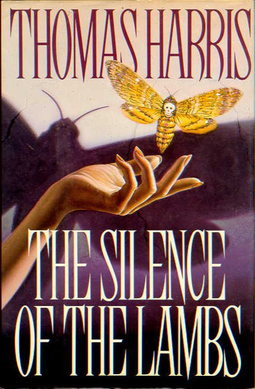A while back I wrote about how I came to buy and read the hardcover version of The Silence of the Lambs, by Thomas Harris, when it was first published 35 years ago. (Yes, it really was that long ago.) I was only 23 years old at the time, and not really earning enough money to buy hardcover novels on a regular basis.
But as I explain in this post for SleuthSayers, the mystery writers blog, sometimes just the right review can send you rushing to a bookstore.
In my case, it was an article in The New York Times that convinced me that this was the right book for me. I consider this an interesting post because so many of us don’t really track the reasons why we consume a certain type of content.
If you’re a serious reader or movie buff, for example, you are constantly hearing about materials that you simply must check out. The recommendations come so fast and furious if you live in this world that it becomes hard to say why something clicked for you.
You can check out my story over at SleuthSayers, in a post entitled:
The Lambs Will Never Stop Screaming!
In this case, I know exactly what sent me to the store. It was this paragraph in the review:
“[Mr. Harris] knows about strange things, like the life cycle of lepidoptera, the legal spacing of fishhooks on a trotline, moths that live only on the tears of large land animals, and the amount of brain matter it takes to tan a hide. The scene where Clarice Starling explores Dr. Lecter’s tip by forcing her way into a storeroom and investigating the back seat of a vintage Packard is a tour de force of descriptive economy.”
I had studied journalism in school, and I revere good reporting as much as I love great fiction. So it piqued my interest that a great journalist—Thomas Harris—could employ his reporting skills to pull together a masterful thriller.
In my case, I was able to cast a wider net and explain why this particular book resonated with me. It came down to my previous crime fiction references:
Lately, I’ve been trying to understand why I like the books and media that I like. Is it the writing? The plot devices? What the hell was I hoping to glean from an author who “knows about strange things”? Why did I bring a notebook to the theater on my second viewing of Silence and take copious notes on its structure?
…
I’m a sucker for psychological elicitation scenes, where a brilliant (or insane) shrink gets at the heart of the protag’s issues with a couple of quick questions. The Lecter/Starling relationship, which was hinted at in Christopher Lehman-Haupt’s Times review probably hooked me. Besides analyzing Starling, Lecter nutures her career, asking questions that prompt her to crack the case: “How do we begin to covet, Clarice?” Foster and Hopkins make the movie, but their onscreen time together amounts to a mere four scenes. If I dig deeper into my mystery fiction background, I was probably cued to enjoy shrink scenes from my early reading (and re-reading) of Ellery Queen novels, particularly Cat of Many Tails.
I’m a sucker for the hurting/wounded protagonist who is still remarkably competent. Starling and Will Graham, the Red Dragon protagonist, both fit the bill. Jonathan Demme, the director of Silence, said in interviews that he went out of his way to portray the FBI as competent. Graham’s problem-solving thought process, as portrayed in both the book and film, is fascinating. I still get chills when the Manhunter Graham announces ruefully that he must visit Lecter in prison to “recover the mindset.”
That all said, I do think the book and movie series jumped the shark quickly, right after this movie debuted. The later titles and films don’t live up to the first two books. (Though I do like the TV series, which remixed all the elements of the books in a marvelous new way.)
I hope you’ll check out the post in greater detail if you like the franchise.
Moth photo (at top) by me. No—it’s not Acherontia styx.



